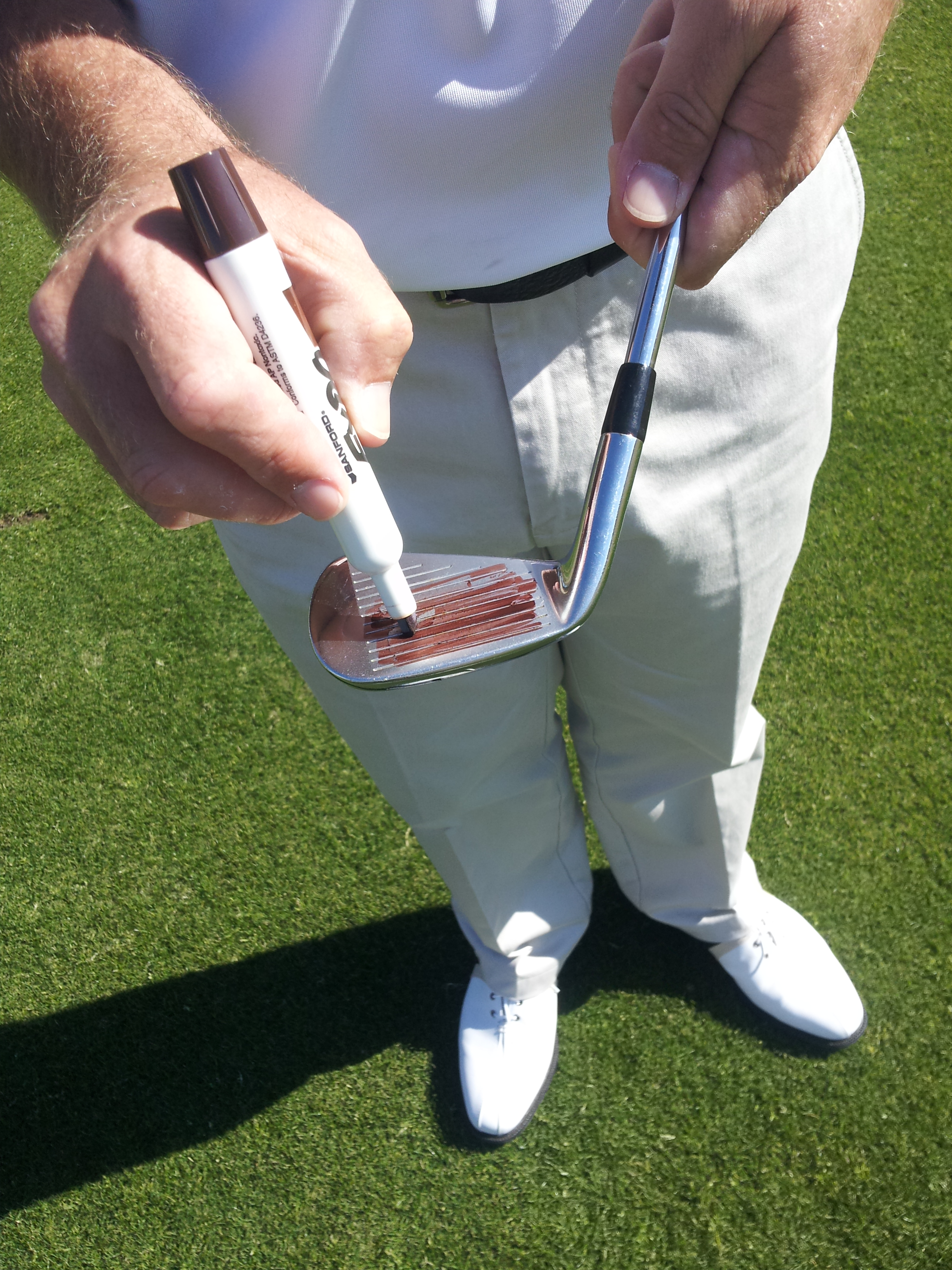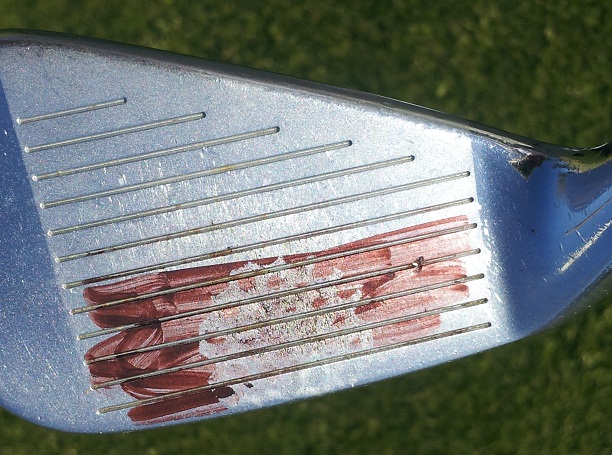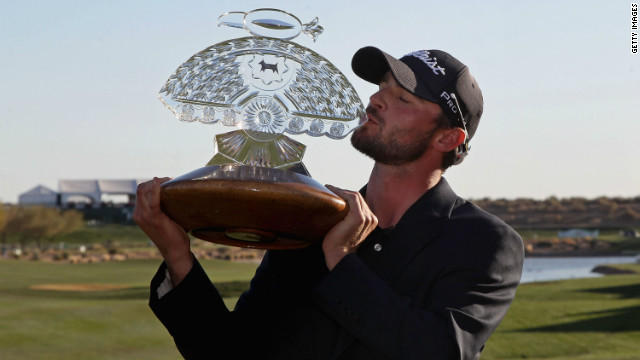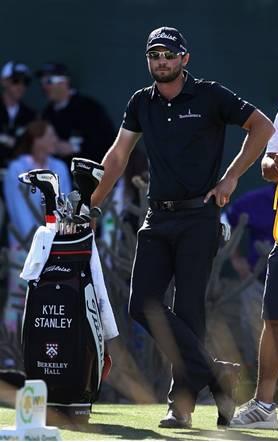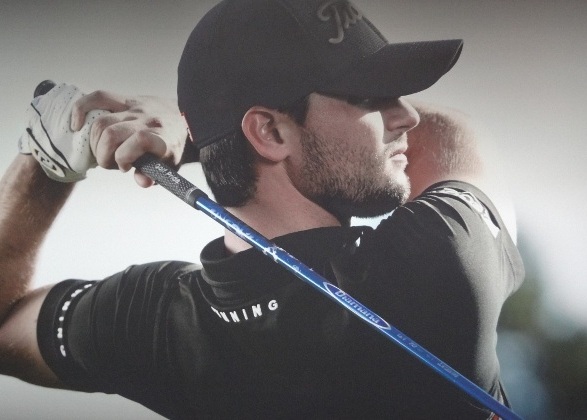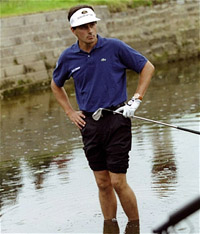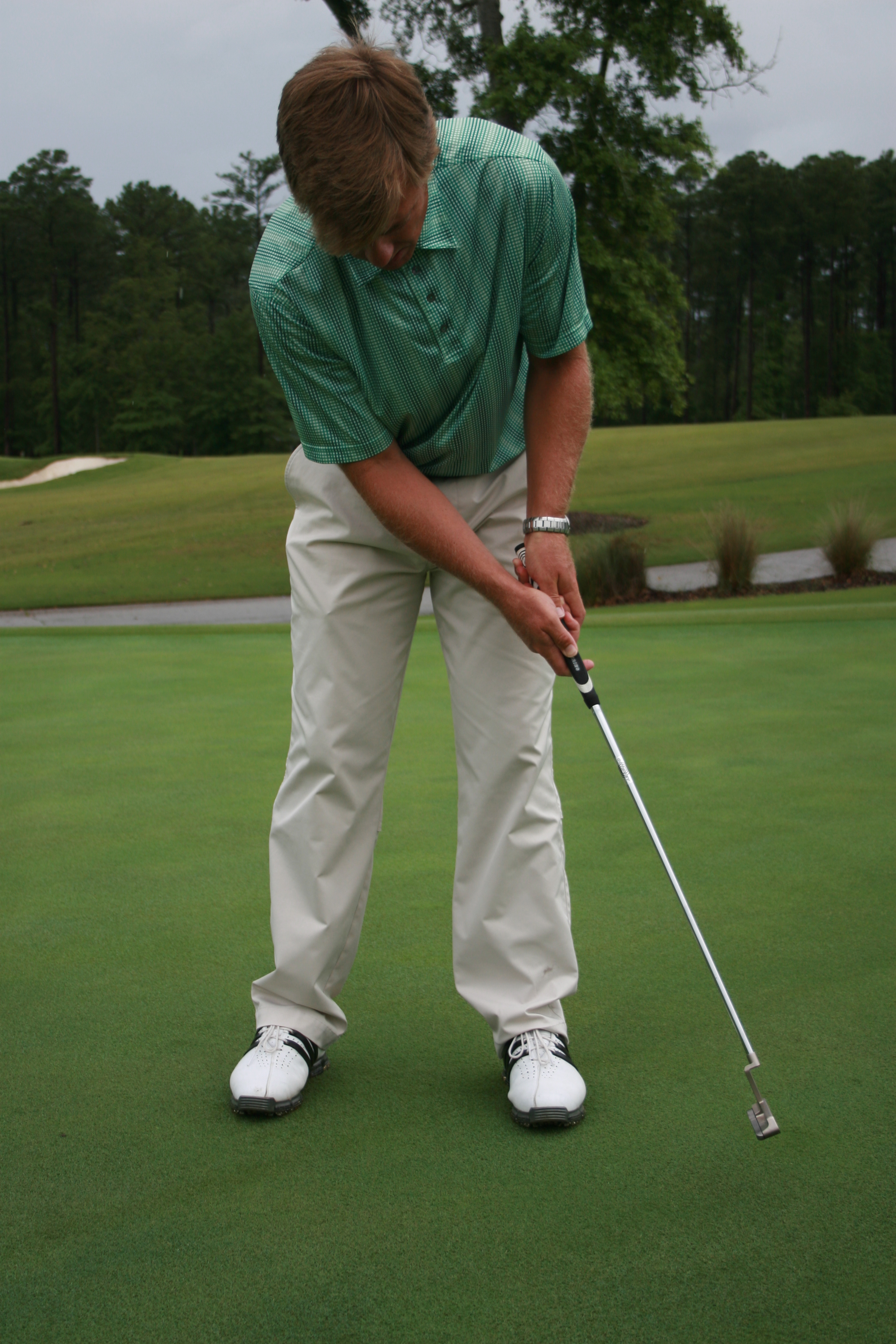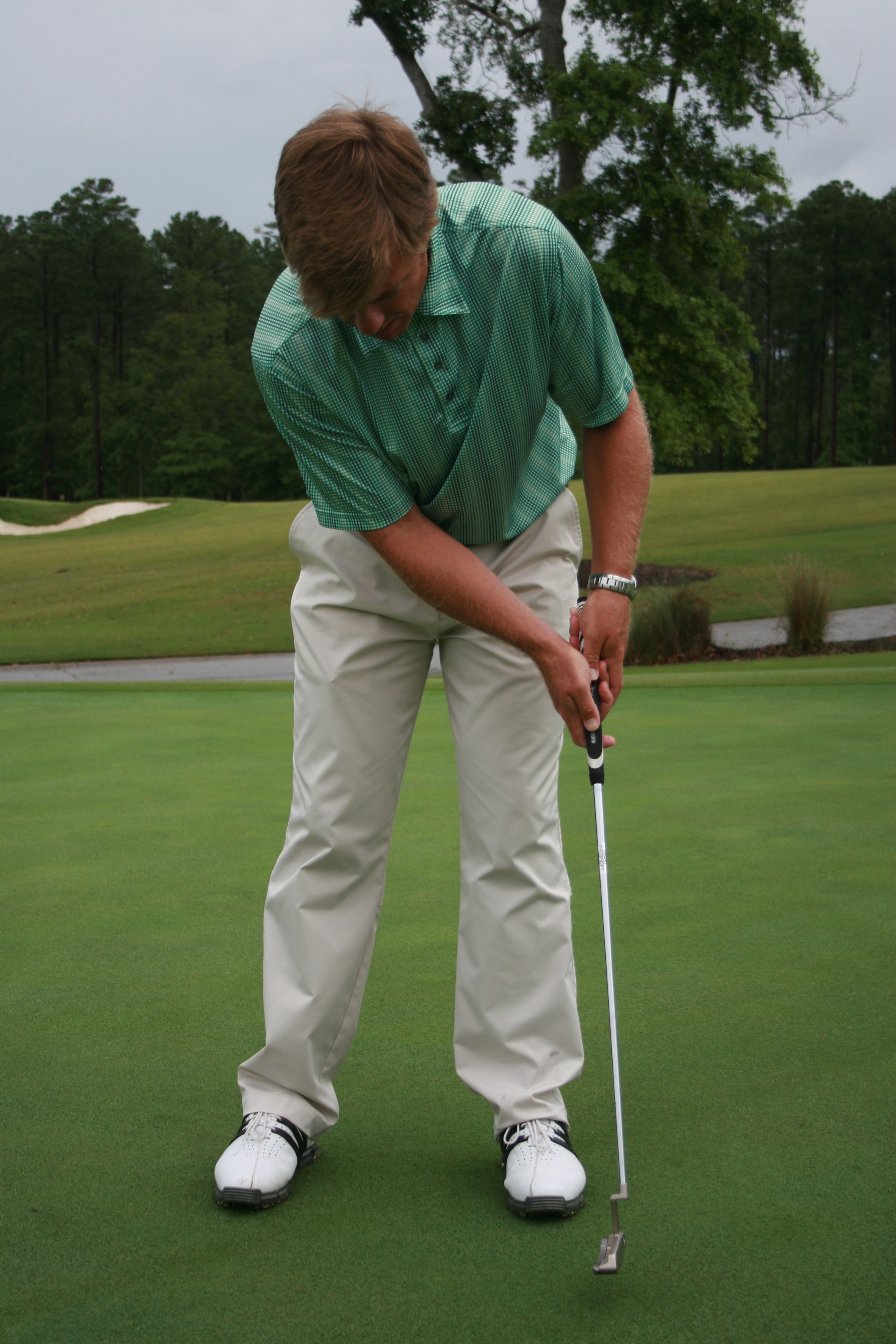As you may have heard, it's all about impact! And it really is. The most important part of the golf swing is the point at which the golf club communicates to the golf ball - impact. The ball spends 1/2000 of a second on the face and it's during this sliver of time that the outcome of every shot is determined.
I often share with golfers how the laws of physics cause the ball to respond to the club, and while this information is helpful it refers primarily to centered hits. It is too seldom that I discuss off-center hits and how the ball responds to this frequent occurrence. Today's the day!
When the ball is struck anywhere other than the center of the face a phenomenon

called
gear effect occurs. Ever heard of it? It causes the ball to draw (or fade less) on toe oriented hits and fade (or draw less) on heel oriented hits. I often see a golfer struggling to stop the ball from fading, yet every shot is struck off the heel or inside of the face. Gear effect is elevated when you use clubs with larger heads such as a driver and it's actually the reason why the face of a driver is curved from toe to heel and from top to bottom. The curve on the face of a driver actually gets the ball, when struck off the toe for example, to launch to the right (for right-handers) and then
gear effect causes the shot to curve back to the target.
Gear effect plays a role in
all shots where the ball is not struck in the center of the face and let's be honest -
and that is most shots. The research I have conducted using
TrackMan has shown that better golfers (single figure handicaps or better) hit the sweet spot or center of gravity less than 20% of the time! Think about that for a second...
The best method to ascertain where you are striking the ball on the clubface is to use a dry erase marker to cover a portion of the face. Hit a shot or two, take note of where the strike occurs and then re-apply. After a handful of shots you'll start to get a good idea as to what your tendencies might be because, while you may not hit the sweet spot often enough, most golfers are fairly consistent with where they miss.
Keep in mind that it is very difficult to influence where the ball is being struck on the face by altering your distance from the ball. For example, heel hits do not mean that you should move away from the ball as this will more than likely cause you to reach out for the ball even more and exacerbate the problem.
Once you start to learn what your tendencies are an excellent drill is to position a row of tees just outside the toe if you hit shots predominantly off the heel and vice versa for toe hits.
After a few shot you will start to sense what the body and arms need to do in order to make a quality strike in the center of the clubface. Give it a try!
Another important note:
andrewricegolf.com is pleased to announce that
Derek Lemire,

Fitness Trainer at Berkeley Hall and trainer to recent
PGA Tour Champion Kyle Stanley, will be making regular contributions to this site. Derek will be offering important advice to all golfers concerning
exercise programs, stretching and even nutrition. I have worked with Derek at
Berkeley Hall for a long time and I am excited to share his passion and knowledge with all of you.
Thanks for reading and good striking!
 called gear effect occurs. Ever heard of it? It causes the ball to draw (or fade less) on toe oriented hits and fade (or draw less) on heel oriented hits. I often see a golfer struggling to stop the ball from fading, yet every shot is struck off the heel or inside of the face. Gear effect is elevated when you use clubs with larger heads such as a driver and it's actually the reason why the face of a driver is curved from toe to heel and from top to bottom. The curve on the face of a driver actually gets the ball, when struck off the toe for example, to launch to the right (for right-handers) and then gear effect causes the shot to curve back to the target. Gear effect plays a role in all shots where the ball is not struck in the center of the face and let's be honest - and that is most shots.
called gear effect occurs. Ever heard of it? It causes the ball to draw (or fade less) on toe oriented hits and fade (or draw less) on heel oriented hits. I often see a golfer struggling to stop the ball from fading, yet every shot is struck off the heel or inside of the face. Gear effect is elevated when you use clubs with larger heads such as a driver and it's actually the reason why the face of a driver is curved from toe to heel and from top to bottom. The curve on the face of a driver actually gets the ball, when struck off the toe for example, to launch to the right (for right-handers) and then gear effect causes the shot to curve back to the target. Gear effect plays a role in all shots where the ball is not struck in the center of the face and let's be honest - and that is most shots. 

